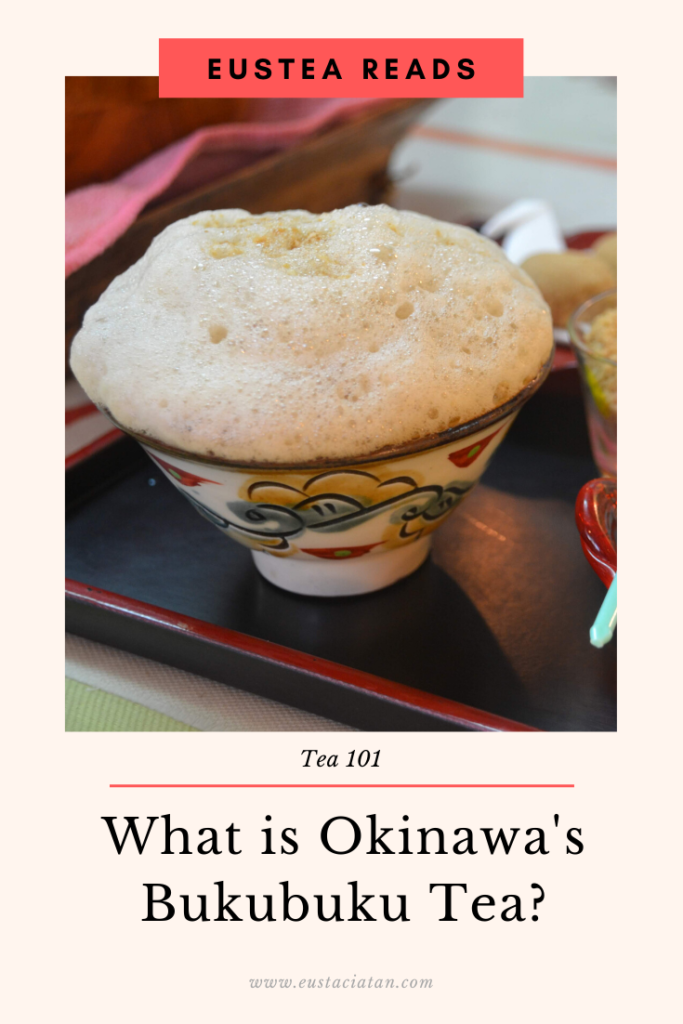When it was decided that my sister and I were going to Okinawa, I decided to try and see if there was anything interesting tea-wise. Well, I found Bukubuku Tea (ブクブク茶), which is unlike anything that I’ve ever seen before!
What is Bukubuku Tea (ブクブク茶)?
Bukubuku tea, a type of furicha, is a traditional Okinawan tea. Sadly, bukubuku tea was almost driving to extinction during World War II, because the tea sets were broken, there were problems finding the correct water, and they didn’t have the time to roast the rice. Luckily, someone in Okinawa had sent a bukubuku tea set to a friend in Tokyo and that had survived the war. When s/he discovered that the set was still intact, s/he had it sent back and that was how the tea was saved. In fact, bukubuku tea had a bit of a comeback in the 1980s, and in 1992, the 沖縄伝統ブクブクー茶保存会 (Society for the preservation of traditional Okinawan Bukubuku tea) was set up.
As to the history of its name, it’s said that the name came about because the bubbles made a “buku buku” sound. In Okinawan’s dialect, the word for “bubbles” is also aアーブク (a-buku), which I’m guessing contributed to the name too (this is purely my guess).
My experience trying Bukubuku Tea (ブクブク茶)
I found a shop called 嘉例山房 (Karisanfan) near Shuri castle which sold bukubuku tea and it had pretty good reviews so that’s where I went!
The set is cost 800 yen, which is a lot less than what I expected. There are several flavours but I chose the plain version. If I have the chance to go back to Okinawa, I’ll definitely try another flavour.
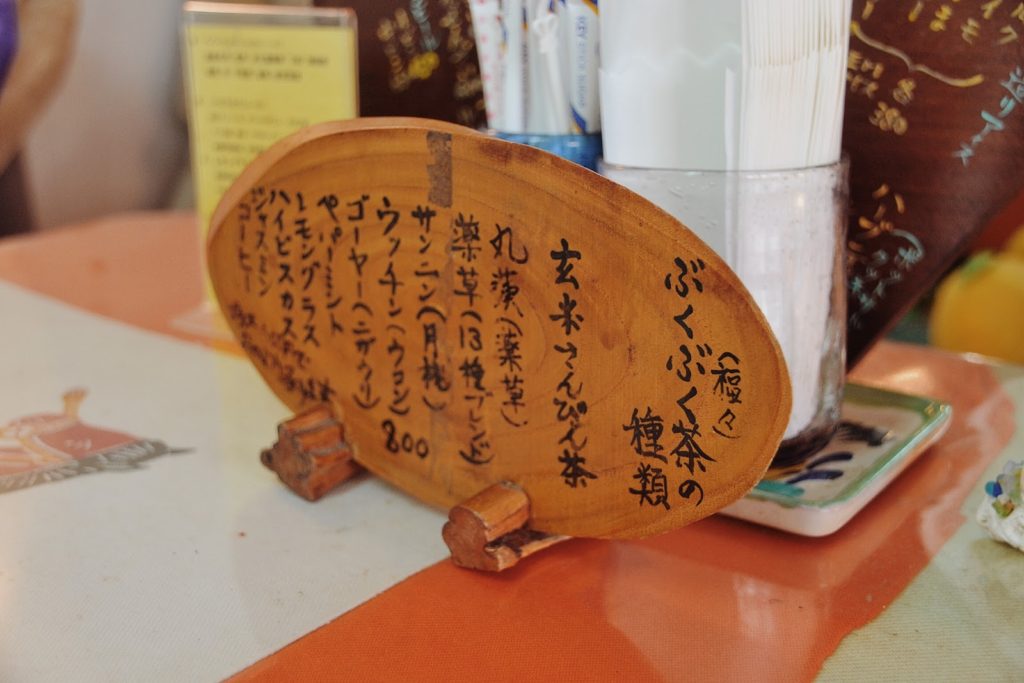
The first thing that came was the tea in a large bowl:
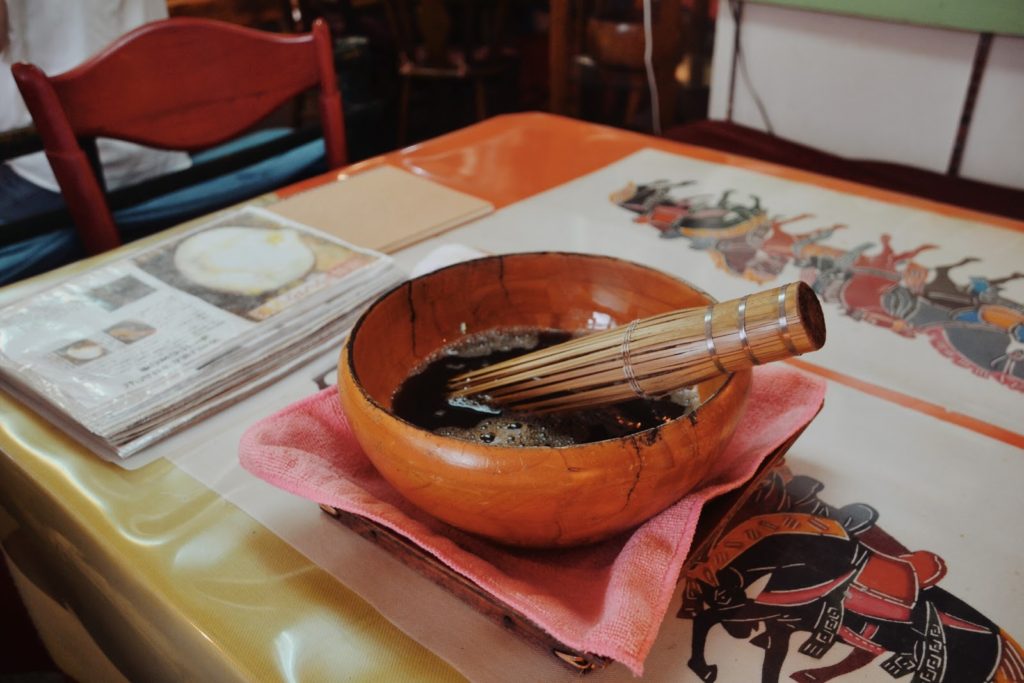
The tea smelled like mugicha and I was told to whisk the tea in the large wooden bowl to make the bubbles. There’s no particular method, but you should be whisking the top layer of liquid for about 2-3 minutes. Then you let the bubbles sit to firm up (I believe the exact words were しっかりする) and then you can scoop the bubbles up and drop them into the drinking cup.
My tea after a couple of minutes Luckily the rest of the tea came with bubbles or I would definitely not have much to drink because I am that lousy!
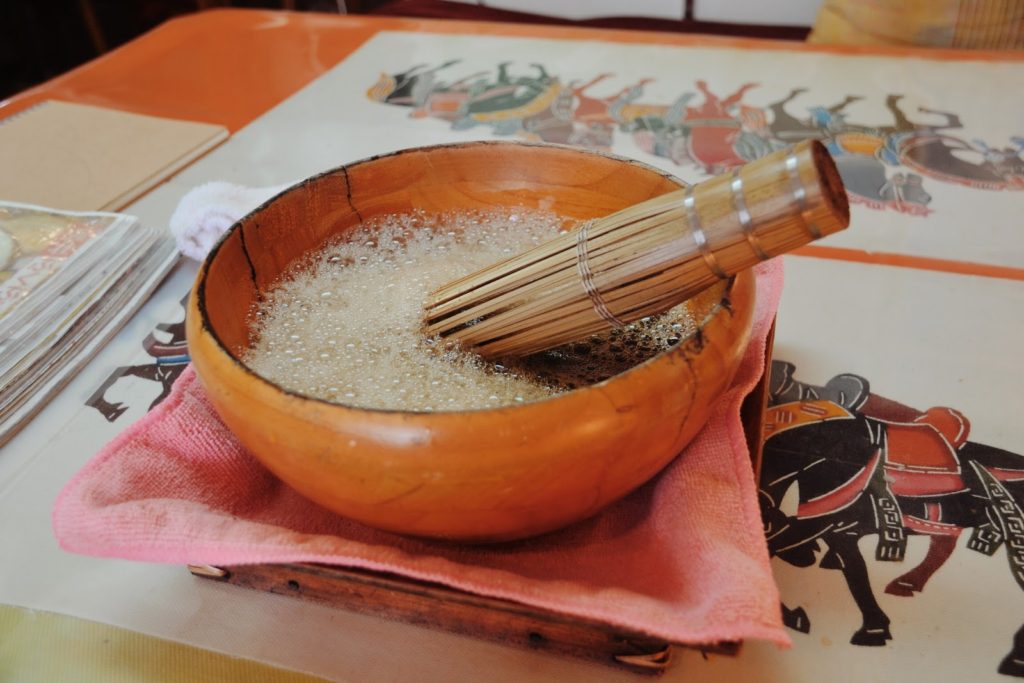
Because a lot of bubbles are needed, you basically push the bubbles made to one side to make room for more bubbles. You only transfer the bubbles to the drinking bowl when you have enough and they aren’t too soft because that makes it harder to transfer.
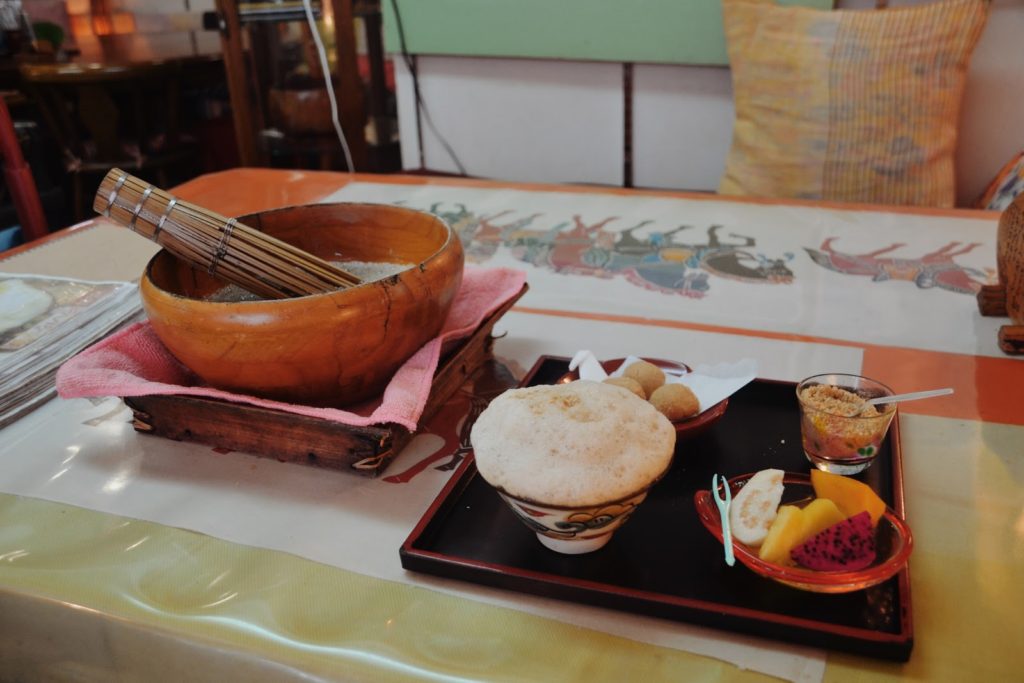
By the way, even though bukubuku tea is commonly described as literal bubble tea, as in ‘you literally drink the bubbles!!!‘ they do have liquid tea in the cup too.
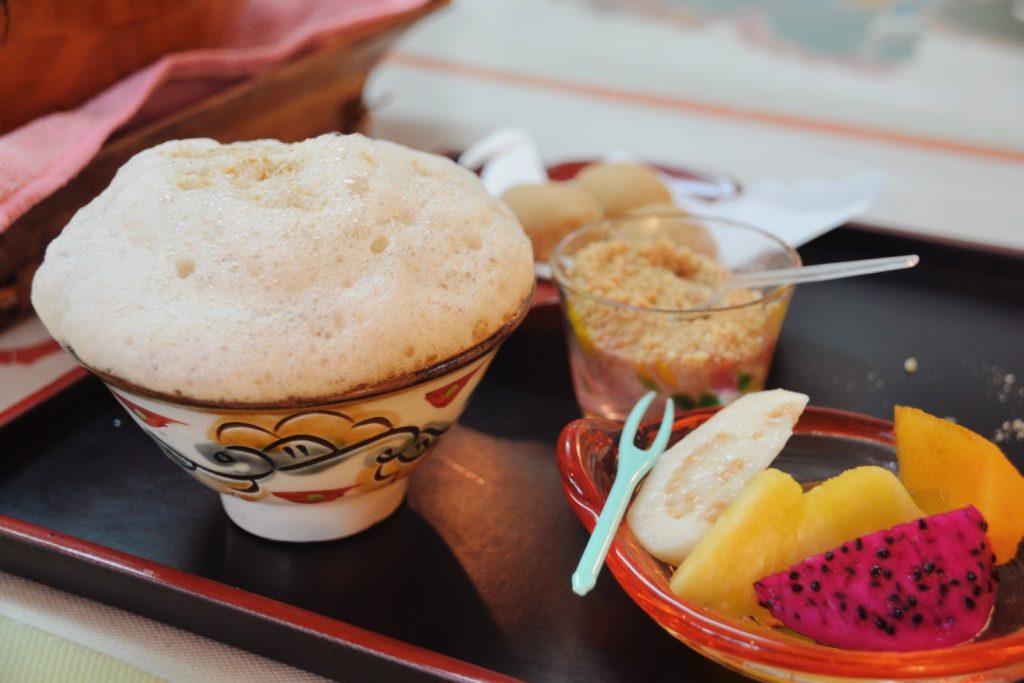
The way to drink this is to hold the cup in both hands and eat the bubbles. The bubbles are tasteless (which should not have surprised me as much as it did) so you can sprinkle a peanuts + sugar mix on top of the bubbles to give it some flavour. I was also told that if that isn’t sweet enough, you can add sugar as well. If you tilt the cup, you can drink the liquid tea. The only thing you can’t do is to put the peanut sugar mixture into the big bowl that the bubbles come from.

The tea set also came with sweets — some fruits and handmade chinsuko, an Okinawan biscuit made primarily of lard and flour. The chinsuko was really good too! I think it was the best that I had on this trip.
Digression: Chinsuko used to be shaped like a chrysanthemum, but it’s now shaped like a long oval for convenience. It’s also a really popular omiyage item, so if you’re at Okinawa and don’t know what to buy for our friends, you can just get this.
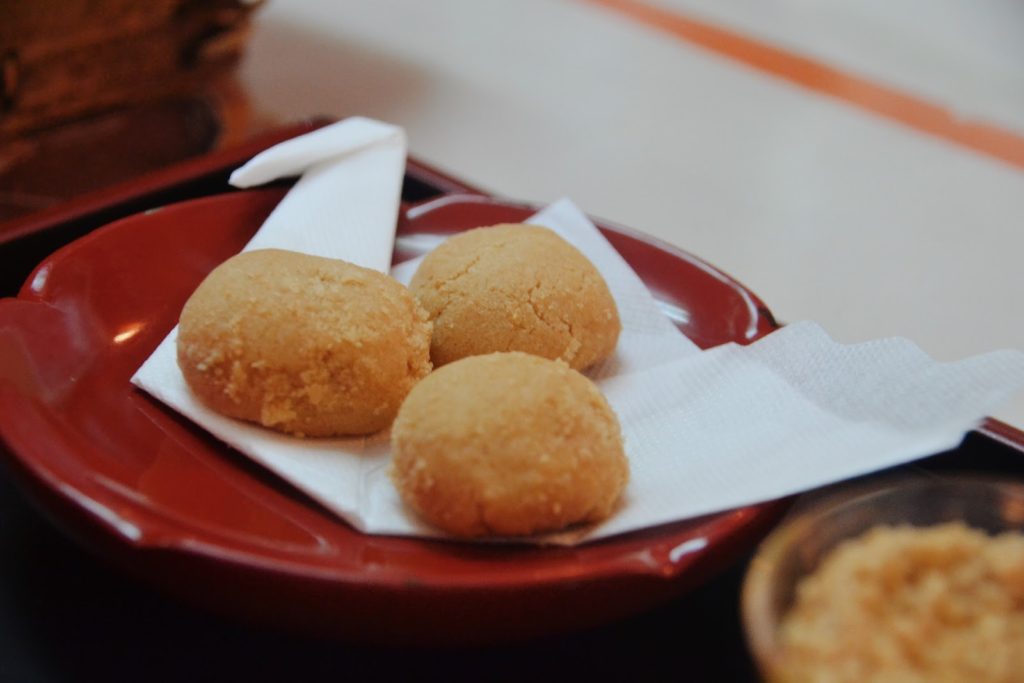
I asked about the bubbles and according to the lady, the tea in the bowl is made with 硬水, which literally means “hard water” and is full of minerals. On the other hand, the tea in the drinking bowl is made with 軟水 (soft water) which can not be used to make bubbles. I thought it was pretty interesting that there were two types of water used for this one tea!
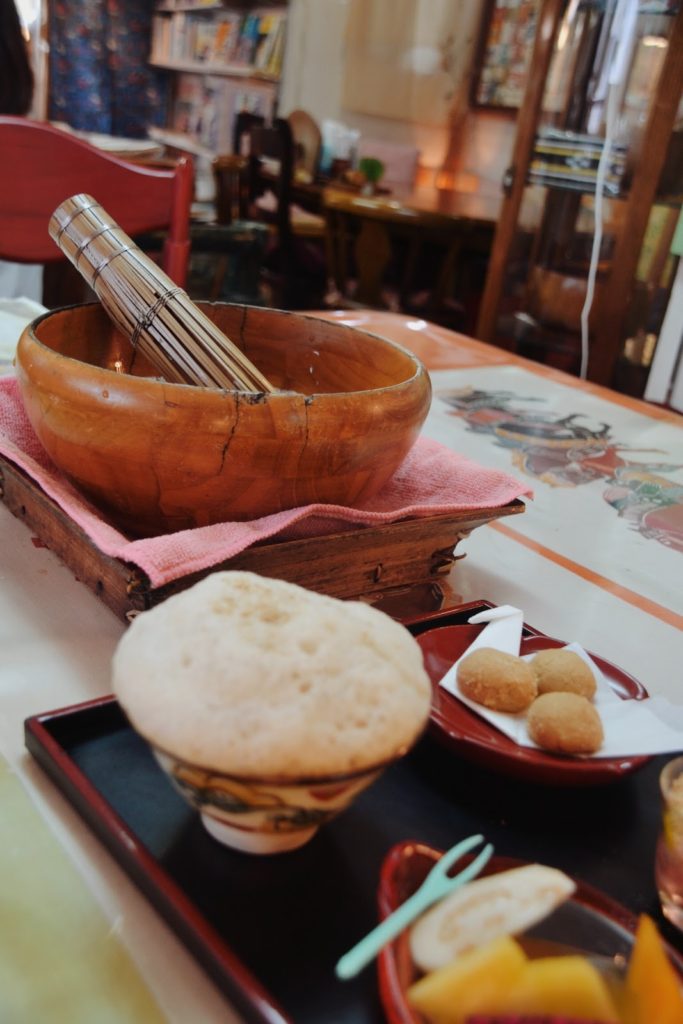
Details about the shop/Getting there
Address:沖縄県那覇市首里池端町9 (Okinawa-ken Naha-shi Shuri Ikehatamachi 9)
Opening hours: 10:00 ~ 18:00
Closed on: Tuesdays and Wednesdays
Parking: 4 lots available
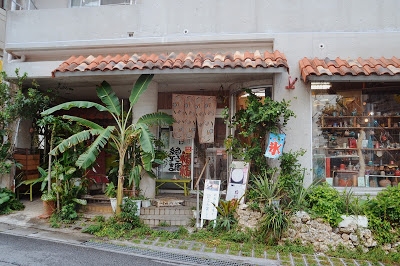
The closest station is Gibo, but the road is mainly uphill so be prepared. You can also walk over from Shuri castle (it’s supposed to take about 30 minutes).

The shop is nice and cosy and the lady there was very friendly. Since Shuri castle is one of the must-go places when you’re in Naha, it would be easy to fit a trip to Karisanfan before or after visiting the castle.
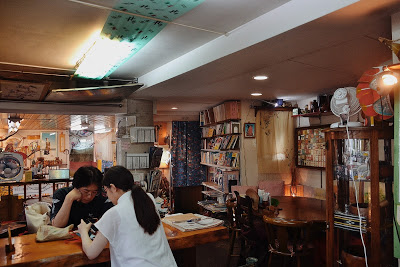
Omake: What is 振り茶 (furicha)?
Furicha is basically 番茶 (bancha – a type of green tea) that is whipped and then drunk or eaten. It used to be fairly widespread until the 18th century, and now furicha is regarded as a rare sort of tea. Wikipedia lists four types of furicha:
1. Bukubuku tea
2. Batabata tea (バタバタ茶) from Toyama and drunk in both Northern Toyama and Niigata
3. Botebote tea (ぼてぼて茶) from Izumo in Shimane
4. Hiki tea (挽き茶) from Kashihara in Nara
I would really love to try the other three types of tea in the future! For more about tea, check out the rest of the posts in my Tea 101 series!
References
My original post on Bukubuku tea
Bubbles, rice give Buku Buku Tea special flavor by Japan Update
Japanese Wikipedia page on furicha
Japanese Wikipedia page on Bukubuku tea
沖縄伝統ブクブクー茶保存会 Page
ぶくぶく茶の歴史 (The history of Bukubuku tea – Really fascinating page!)
Karisanfan Shop information
